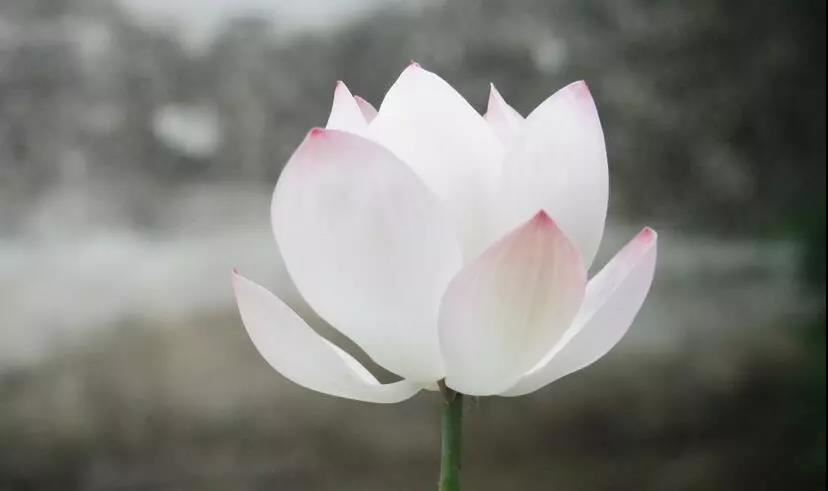竹子的摆放风水 竹子的摆放有什么讲究
竹子自古以来就被视作一种具有独特魅力的植物,不仅在园林设计中被广泛使用,还在风水学中具有重要地位。竹子的摆放风水涉及到许多讲究,下面将从定义、分类、举例和比较等角度来阐述。
我们需要明确竹子的摆放风水是指根据竹子的特性和环境条件,以及人们对吉祥、繁荣等美好寓意的追求,将竹子放置在特定位置的一种修饰方式。
竹子的摆放可以根据不同的需求和目的进行分类。根据摆放的位置可以分为室内摆放和室外摆放;根据摆放的方式可以分为摆放在花盆中和直接种植在土地中;根据摆放的数量可以分为单竹摆放和合竹摆放等。不同的摆放方式和分类都反映了人们对环境和个人寓意的不同追求。
举例来说,室内摆放的竹子通常可以放置在书房、会客厅和家居环境中。竹子的青翠色彩和挺拔的形态可以为室内空间增添一抹清新和生机。而在室外摆放方面,竹子通常被用来构建庭院、花园和公园等场所的景观。竹子的高耸和竹叶的摇曳可以在户外空间中形成自然、优雅的景观效果。
竹子的摆放风水还与其与其他物体的关系有关。竹子可以与石头、水池等自然元素相结合,形成一种自然和谐的景观效果。竹子还可以与家居装饰品、家具等室内元素相搭配,营造出一种雅致、温馨的居住环境。
竹子的摆放风水是一门注重细节和和谐的艺术。摆放竹子时需要考虑空间、环境、布局等因素,以使其与周围环境相得益彰,并达到所期望的吉祥、繁荣等美好寓意。无论是在室内还是室外,竹子的摆放都可以为人们带来舒心、愉悦的感受。
竹子的摆放风水是一门讲究搭配和和谐的艺术。通过定义、分类、举例和比较等方法,我们可以更清晰地了解和认识竹子的摆放风水的相关知识。希望本文对于读者们有所启发,能够在日常生活中更好地运用竹子的摆放风水知识,创造出更美好的生活环境。
竹子的摆放风水客厅
竹子是一种传统的风水元素,被广泛应用于室内装饰。在客厅中,竹子的摆放不仅可以提升空间的美观度,还有助于调节气场和促进家庭的和谐。本文将以客观、专业、清晰和系统的方式,通过定义、分类、举例和比较等方法,阐述竹子的摆放风水客厅的相关知识。
一、竹子的风水意义
竹子作为一种绿色植物,寓意着生机勃勃和自然的美好。在风水学中,竹子被认为是一种能够吸纳煞气和负能量的神奇植物。它能够调和室内的气场,为家庭带来和谐、平安和繁荣。
二、竹子的分类与摆放
根据竹子的形态和数量,可以将竹子分为独竹、成对竹和群竹。独竹通常摆放在客厅的角落,象征着个体和独立性;成对竹则是将两根竹子一起摆放,常常用于对门的两侧,用来招财;而群竹则是多根竹子一起摆放,寓意着家庭的团结和幸福。
三、竹子的摆放位置
在摆放竹子时,需要考虑它们的位置和方向。竹子应该放置在客厅的明亮、通风的位置,避免摆放在阴暗潮湿的地方,以免影响竹子的生长和气场的流通。竹子的摆放方向也很重要,通常应该面向房门,而不是背对房门,这样能够吸引财运和招福。
四、竹子与其他装饰品的搭配
竹子通常与其他装饰品一起搭配使用,以增添居室的美感。可以将竹子摆放在靠近窗户的位置,与窗帘的颜色相互映衬,营造出清新自然的氛围。竹子还可以与水景、盆栽等植物一起搭配使用,共同构建一个和谐宜人的居住空间。
竹子作为一种重要的风水元素,其摆放位置和摆放形式都对居室的风水起着重要的影响。在客厅中,合理地摆放竹子能够调和气场,增强家庭的和谐和幸福。通过本文的介绍,相信读者对于竹子的摆放风水客厅已经有了更深入的理解和认识。希望这些知识对于您的居家生活有所启发。
竹子的摆放有什么讲究
竹子作为一种常见的室内植物,不仅具有装饰和美化环境的作用,还有着一定的文化内涵。竹子的摆放是一门学问,需要考虑到环境、风水和美学等因素,才能发挥出竹子的最大功效。本文将主要从定义、分类、举例和比较等角度来阐述“竹子的摆放有什么讲究”。
竹子作为一种传统文化符号,常常被用来装饰室内空间,不仅能够传达一种简约自然的生活态度,还具有较好的风水效果。竹子的摆放并非只是简单地将它放在某个角落,而是需要根据具体的环境和需求进行有意识的布置。
竹子的摆放是指将竹子放置在特定的位置和角度,以达到特定的效果。它可以通过竹子的数量、布局、高低、形状和材质等来实现不同的目的。
根据摆放的位置和场景不同,竹子的摆放可以分为室内摆放和室外摆放两种情况。在室内,竹子可以摆放在客厅、卧室、书房等地方,而在室外,竹子可以摆放在花园、阳台、庭院等地方。
【举例】
以客厅为例,竹子的摆放可以根据家居风格和家庭成员的需求来确定。在现代简约风格的客厅中,一根鲜活的绿色竹子可以摆放在茶几上,既可点缀整个空间,又能增加生机和活力。而在传统古典风格的客厅中,可以选择较为粗壮的竹子,通过花瓶或花盆进行摆放,并配以一些传统的装饰品,以突出中国古典文化的韵味。
【比较】
与其他植物相比,竹子在摆放上有着独特的讲究。竹子的形态优美、线条流畅,可以用来修饰室内空间,增强整体的美感。竹子还具有弯曲的性质,可以用来营造独特的景观效果,如制作弯弯曲曲的竹子屏风,增加空间层次感。相比之下,其他植物多数是直立的,摆放时需要考虑与其他家具或物品的呼应,以避免造成空间的单一和呆板。
竹子的摆放是一门学问,通过合理的摆放方式,可以营造出不同的空间氛围,使整体环境更加舒适和谐。在选择摆放方式时,我们应根据具体的环境和需求来确定,尽量保持简约自然的风格,同时考虑到风水和美学等因素,以充分发挥竹子的装饰和美化作用。
【参考译文】
Bamboo, as a common indoor plant, not only serves the purpose of decoration and beautification but also carries cultural connotations. The placement of bamboo requires considerations of the environment, Feng Shui, and aesthetics to maximize its benefits. This article aims to explain the intricacies of bamboo placement from the perspectives of definition, classification, examples, and comparisons.
【Introduction】
Bamboo, as a traditional cultural symbol, is often used to decorate indoor spaces, conveying a simple and natural lifestyle while enhancing Feng Shui. However, bamboo placement is not simply about placing it in a corner but requires conscious arrangement based on specific environments and needs.
【Main Body】
【Definition】
Bamboo placement refers to the act of placing bamboo in specific locations and angles to achieve specific effects. It can be achieved through different bamboo quantities, layouts, heights, shapes, and materials to serve different purposes.
【Classification】
Bamboo placement can be divided into indoor and outdoor placement based on different locations and settings. Indoors, bamboo can be placed in living rooms, bedrooms, studies, and other areas. Outdoors, bamboo can be placed in gardens, balconies, courtyards, and other spaces.
【Examples】
Taking the living room as an example, bamboo placement can be determined based on the home style and the needs of family members. In a modern minimalist living room, a vibrant green bamboo can be placed on the coffee table, decorating the entire space and adding vitality. In a traditional classical living room, stout bamboo can be chosen and placed in a vase or flower pot, complemented by traditional decorations to highlight the charm of Chinese classical culture.
【Comparison】
Compared to other plants, bamboo has unique considerations in placement. The graceful and flowing lines of bamboo can be used to embellish indoor spaces and enhance the overall aesthetic appeal. Meanwhile, the bending nature of bamboo can be utilized to create unique landscape effects, such as making curved bamboo screens, adding a sense of spatial hierarchy. In contrast, most other plants are upright and require considerations of coordination with other furniture or items to avoid creating a monotonous and rigid space.
【Conclusion】
In conclusion, bamboo placement is a matter of expertise. Through proper placement, different spatial atmospheres can be created, making the overall environment more comfortable and harmonious. When choosing placement methods, we should determine them based on specific environments and needs, striving for a simplistic and natural style while considering factors such as Feng Shui and aesthetics, to fully exploit the decorative and beautifying functions of bamboo.
发布于 2024-09-03 07:36
















